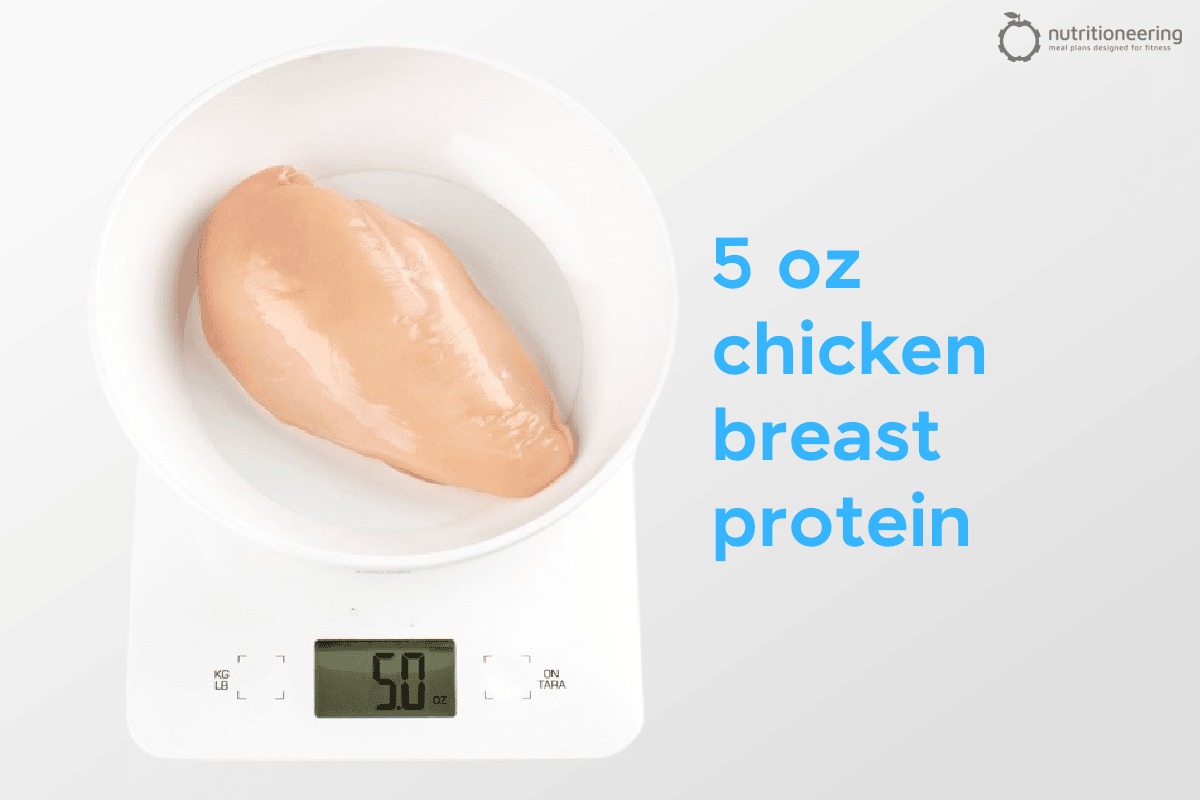Chicken breast is a lean, versatile protein that many people rely on as a nutritious dietary staple. But did you know it also provides a decent amount of the essential mineral potassium? Getting enough potassium is crucial for overall health and wellbeing. This mineral plays diverse roles in the body from regulating fluid balance to supporting proper muscle and nerve function.
So how much of this important nutrient does chicken breast have? This article will go into detail about how much potassium is in chicken breast and what factors affect it. It will also talk about the health benefits of potassium, the daily recommended amounts, and how to get the most potassium from chicken.
Understanding Potassium and Its Importance
Before diving into the specific potassium levels in chicken breast, it’s helpful to understand why this mineral matters in the first place.
Potassium is classified as an electrolyte, meaning it helps conduct electrical impulses in the body. It also maintains fluid balance between cells. Some of potassium’s most vital functions include:
-
Regulating blood pressure: Potassium counters the effects of sodium, helping maintain healthy blood pressure.
-
Supporting muscle and nerve function: Potassium allows muscles to contract and nerves to communicate properly.
-
Maintaining fluid balance: Along with sodium, potassium regulates fluids inside and outside of cells.
-
Supporting heart health: Potassium keeps heartbeats regular and reduces strain on the cardiovascular system.
Potassium levels that are too low can make you tired, weak, give you cramps, and even cause heart palpitations or rhythm problems. This is why it’s so important to eat a lot of foods that are high in potassium, like chicken breast.
How Much Potassium Is in a Chicken Breast?
How much potassium does a normal chicken breast have now that we know why it’s important?
There are a few factors that influence the exact potassium content:
-
Serving size: Larger breasts naturally contain more potassium. A typical serving is around 3-4 ounces.
-
Cooking method: Boiling chicken can cause potassium to leach out into the water. Grilling, roasting, and baking better preserve nutrients.
-
Part of chicken: Boneless, skinless breasts have slightly more potassium by weight than bone-in chicken with skin.
-
Breed and feed: While minor, some differences in chicken breed and diet can affect potassium levels.
With those caveats, here are some general potassium figures for chicken breast:
-
3 ounces of boneless, skinless chicken breast: 220-250mg potassium
-
100 grams (3.5 ounces) boneless, skinless breast: 259mg
-
100 grams bone-in chicken breast with skin: 123mg
You can see that a serving of chicken breast has a good amount of potassium. Even though it’s not the best source, it’s still a good addition, especially when eaten with other foods that are high in potassium.
How Chicken Breast Compares to Other Foods
To put the potassium content of chicken breast into context, here’s how it stacks up against some other common foods:
-
Banana: 420mg in 1 medium banana
-
Baked potato with skin: 950mg in 1 medium potato
-
Cooked spinach: 540mg per 1⁄2 cup
-
Avocado: 450mg in 1⁄2 avocado
-
Salmon: 534mg in a 3oz fillet
-
Beans: 600mg per 1⁄2 cup of white beans
As you can see, chicken breast lands somewhere in the middle of the pack when it comes to dietary potassium sources. While it can’t compete with potassium powerhouses like leafy greens, bananas or beans, it still provides a decent nutrient boost.
Chicken also has the advantage of being very lean and low in calories for the amount of protein it delivers. So it can be an easy way to add potassium to your diet without excess fat or carbs.
How Much Potassium Do You Need Daily?
Now that we know approximately how much potassium is in a serving of chicken breast, how does that stack up against the recommended daily intake?
Here are the current potassium recommendations from major health organizations:
-
WHO: At least 3,510mg per day
-
USDA: 4,700mg per day
-
EFSA: 3,500mg for adults
So a single chicken breast delivering 220-250mg potassium provides around 6-7% of your recommended daily value, depending on which guidelines you follow.
To put it another way, you’d need to eat around 13-15 chicken breasts to meet your full potassium requirement! So while chicken offers a nice nutrient boost, eating a varied diet with lots of fruits, veggies, beans, dairy and other potassium sources is important.
Health Benefits of Potassium in Chicken Breast
Getting adequate potassium doesn’t just fulfill a number on paper. This mineral provides some valuable benefits, including:
Supports heart health: The potassium in chicken breast helps lower blood pressure by counterbalancing sodium. Keeping your cardiovascular system in top shape promotes longevity.
Prevents muscle cramps: Potassium allows muscles to contract and relax properly. Deficiency can lead to painful cramps and spasms, especially during exercise.
Strengthens bones: Research shows higher potassium intake is associated with improved bone mineral density. The phosphorus and protein in chicken may also support bone health.
Improves insulin and blood sugar control: Higher potassium is linked to better insulin secretion and glycemic control, reducing diabetes risk.
As part of an overall healthy lifestyle, consuming boneless chicken breast provides a simple way to reap some of these key health perks of potassium.
Tips for Getting More Potassium from Chicken Breast
If you want to maximize the amount of potassium you get from chicken breast, here are some helpful tips:
-
Choose skinless, boneless breasts to get the most potassium per ounce.
-
Grill, bake or roast instead of boiling to preserve nutrients.
-
Enjoy dark meat like thighs occasionally for slightly higher potassium than white breast meat.
-
Pair chicken with potassium-packed sides like sweet potatoes, spinach, beans, tomatoes or avocado.
-
Use rubs and marinades with potassium-rich spices like paprika, oregano, parsley, cumin or garlic.
-
Opt for fresh chicken whenever possible rather than highly processed options.
With just a few simple tweaks like these, you can readily optimize your potassium intake from chicken breast. Keep enjoying this lean, protein-packed poultry as part of an overall balanced, nutrient-dense diet.
Frequently Asked Questions about Potassium in Chicken Breast
Still have some questions about getting potassium from chicken breast? Here are answers to some common FAQs:
Does organic or free-range chicken have more potassium than conventional chicken breast?
There is no strong evidence that organic or free-range chicken consistently has higher potassium content. However, differences in breed, diet, and rearing conditions could potentially affect potassium levels slightly in some cases.
How does cooking chicken breast affect its potassium content?
Cooking method matters. Grilling, roasting, baking, and pan-frying are best for preserving potassium compared to boiling, which can leach some potassium into the cooking liquid. Avoid overcooking chicken to prevent moisture and nutrient loss.
Can you get too much potassium from eating chicken breast?
It would be extremely challenging to get excessive potassium intake just from eating chicken. Hyperkalemia or high blood potassium is very rare in healthy people and usually only occurs from kidney disease or certain medications.
Does freezing chicken breast lower its potassium content?
Freezing itself does not degrade the potassium in chicken as long as it is stored properly in air-tight packaging. Allow chicken to thaw gradually in the fridge before cooking.
Can taking medications or having certain health conditions affect potassium needs?
Yes, medications including common diuretics, blood pressure drugs, and NSAIDs can impact potassium balance. Certain gut, endocrine and kidney disorders also affect potassium regulation. Consult your doctor about your specific situation.
What are symptoms of low potassium or potassium deficiency?
Mild potassium deficiency can cause fatigue, muscle weakness & cramps, constipation, and heart palpitations. Severe deficiency leads to more serious muscular and heart function impairments. Get tested if you suspect an issue.
Where can I find accurate nutrition info about potassium levels in chicken breast?
For specific brands, check the nutrition labels on chicken packaging. The USDA FoodData Central database also provides detailed, verified nutrition data on thousands of foods including chicken cuts.
The Bottom Line
Selecting high-quality chicken, using potassium-friendly cooking methods, and pairing it with other nutrient-dense foods are easy ways to maximize the benefits of this healthy protein. Incorporate boneless chicken breast into your meal routine for a simple method to support your overall nutrition and wellbeing.

Key Insights into Meat vs. Poultry Consumption
Meat is one of the most widely consumed foods globally, and its production and consumption are increasing year by year (1). Up until a few years ago, pork was the most popular type of meat on the market. But today the latter has given way to poultry, such as chicken, which has become the most consumed meat globally.
It is followed by pork, beef, veal, sheep and goat meat, the last two being the least consumed globally (2). Within the last 50 years, beef production has almost halved while poultry meat production has almost tripled (3).
Production and consumption of poultry have been steadily rising, and poultry is expected to continue to be the main reason why people eat more meat for many decades to come. The dramatic change in meat consumption can be attributed to a wide range of factors, one of which is that poultry is easier to raise because it requires less feed, thus being cheaper to produce. It is no accident that poultry meat consumption and production are higher in low-income countries.
In addition to this factor, it should be considered that beef production has a greater impact on the environment, being a major contributor to greenhouse gas emissions.
Glycemic Index of Chicken vs Beef
As is the case with most meats, the glycemic index of both chicken and beef is 0.



It can be said, in general, that chicken meat, of the two, is the one richest in vitamins. In fact, chicken meat has more vitamin A, vitamin E, vitamin K, vitamin B1, B3, and B5 than beef or pork. Beef, by contrast, is much richer in folate and vitamin B12.
Both chicken and meat provide equal amounts of vitamin B2 and vitamin D, and contain no vitamin C.
Unlike in the case of vitamins, in terms of mineral intake, it is beef that holds the first place.
Beef is significantly richer in calcium, copper, and potassium, and has higher amounts of iron and zinc. This does not detract, however, from the fact that chicken is also a good source of minerals. Chicken contains more minerals such as magnesium and phosphorus than beef. Both types of meat are very similar in terms of sodium intake, with chicken having a few grams more than beef.
Discover how your body responds to what you eat, and make small changes to hit your health goals
If you have any questions left, please keep reading! Below, we answer frequently asked questions regarding the differences between chicken and beef in terms of healthiness level and nutrient intake:
